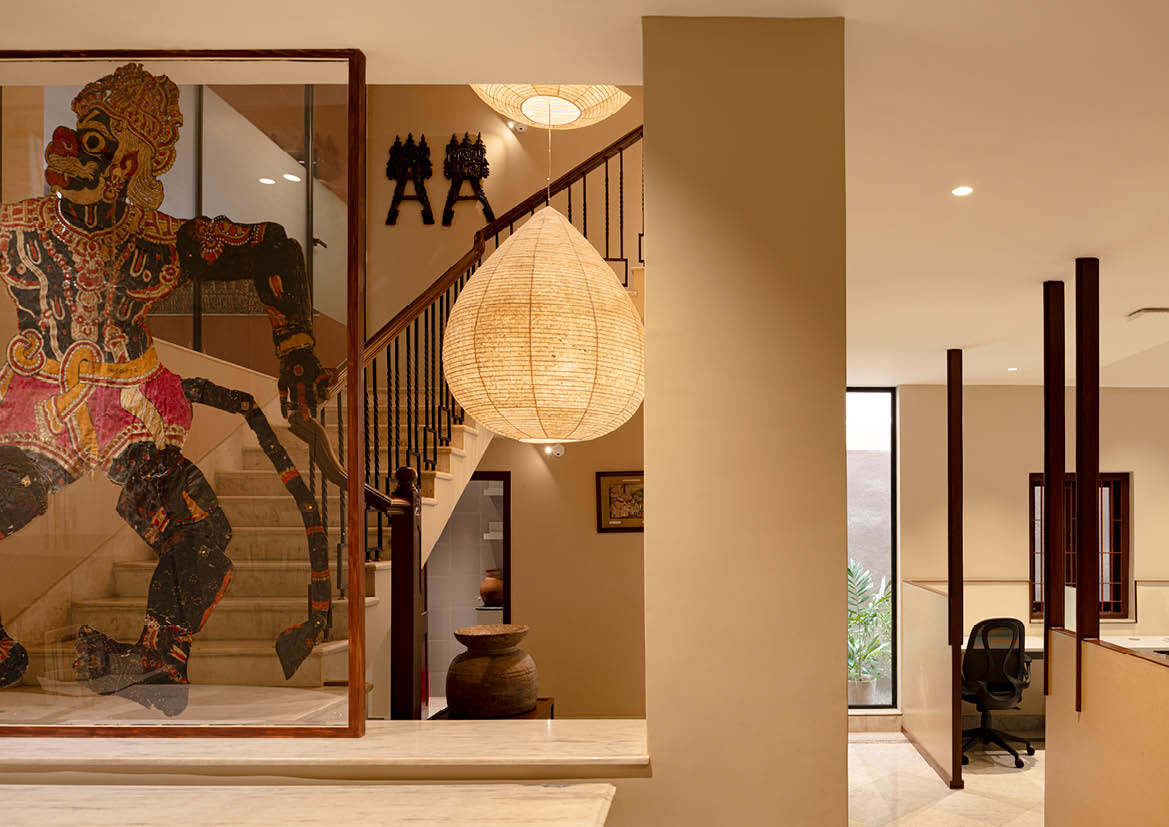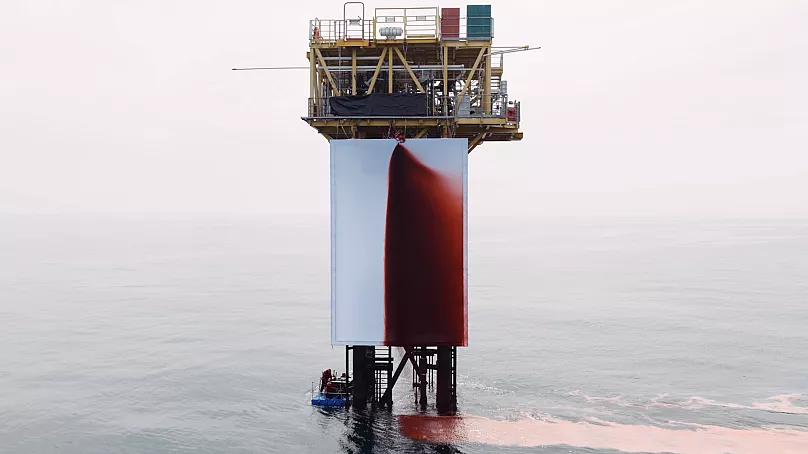Sneha Sengupta views Anish Kapoor as an artist who doesn’t decorate the world, but disrupts it; staining steel, sea, and imagination with colours that force us to feel.
The North Sea isn’t where you’d expect to find a canvas. Yet one morning, a huge sheet of fabric was fixed to the side of an oil platform, drenched in deep red liquid. From a distance, it looked like a wound across the steel, bleeding into the grey horizon.

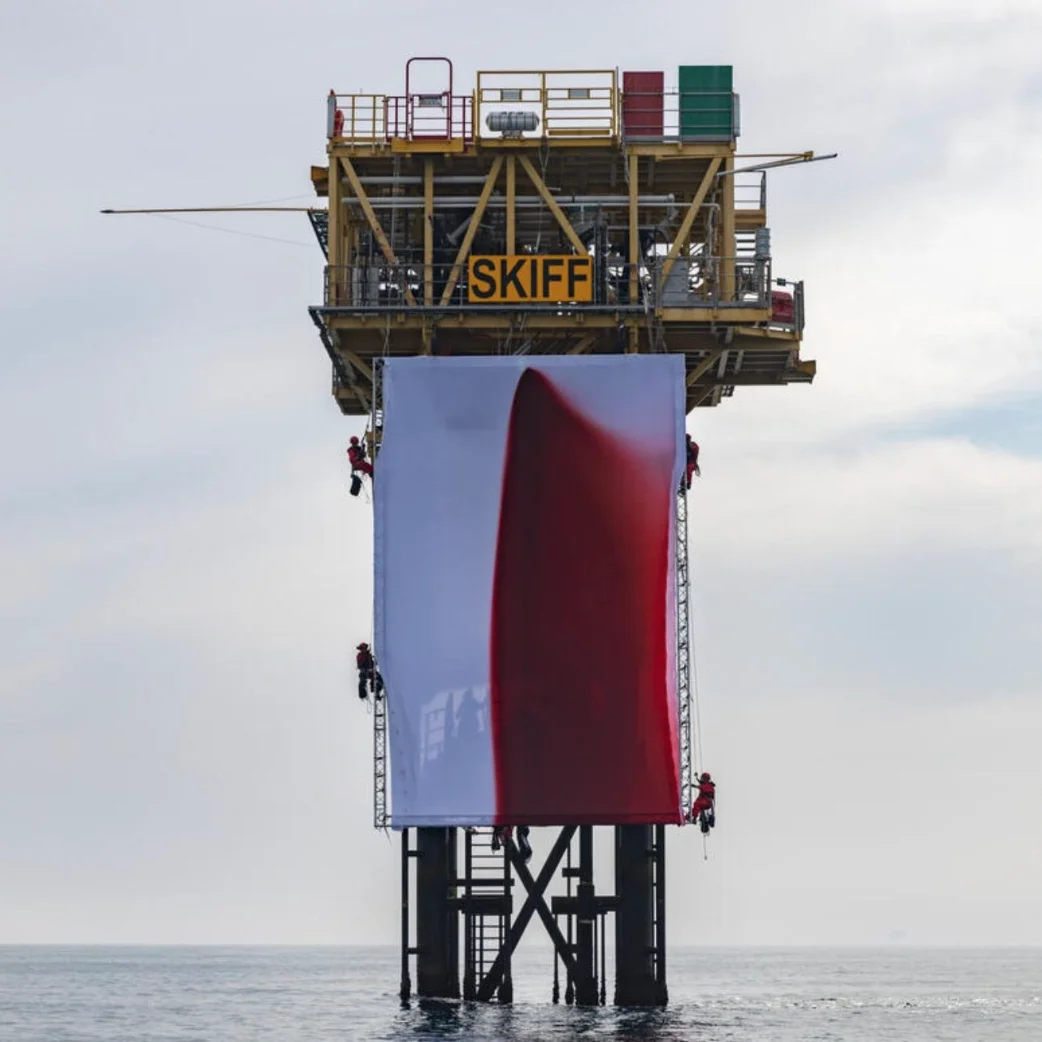
But this wasn’t an accident at sea, it was Anish Kapoor’s art.
Anish Kapoor calls it Butchered. A canvas twelve metres tall clings to the belly of Shell’s Skiff gas platform. Onto it, Greenpeace activists poured a thousand litres of crimson liquid — biodegradable, harmless to the water, yet violent to the eye. The sea took on a new colour that day: rage.
Anish is known for extremes, voids that seem endless, mirrors that distort everything around them, and pigments so pure they almost look unreal. But Butchered takes a different turn. This isn’t a quiet play with perception; it’s loud, almost confrontational. Instead of hanging inside a gallery, the canvas is strapped to steel in the middle of the seaInstead of paint, it’s a thousand litres of red liquid pouring down, turning the platform into a stage that feels raw and unsettling.
This is not an installation to decorate. It is an intervention. A reminder that art, at its most powerful, is not about what we place in our homes but what we allow to haunt our imagination. Anish has given us a work that is less about form than about feeling; the feeling of a planet bleeding, of a horizon stained, of beauty forced to carry grief.
Shooting into the Corner (2008–09)
In this work, a cannon repeatedly fired red wax into a gallery wall, leaving splatters that built up over time. The corner of the room slowly turned into a site of impact, almost like a wound. Butchered carries the same sense of theatre, but instead of a gallery wall, Anish uses the sea and an oil platform as his canvas. The effect is no longer contained indoors — it feels global.
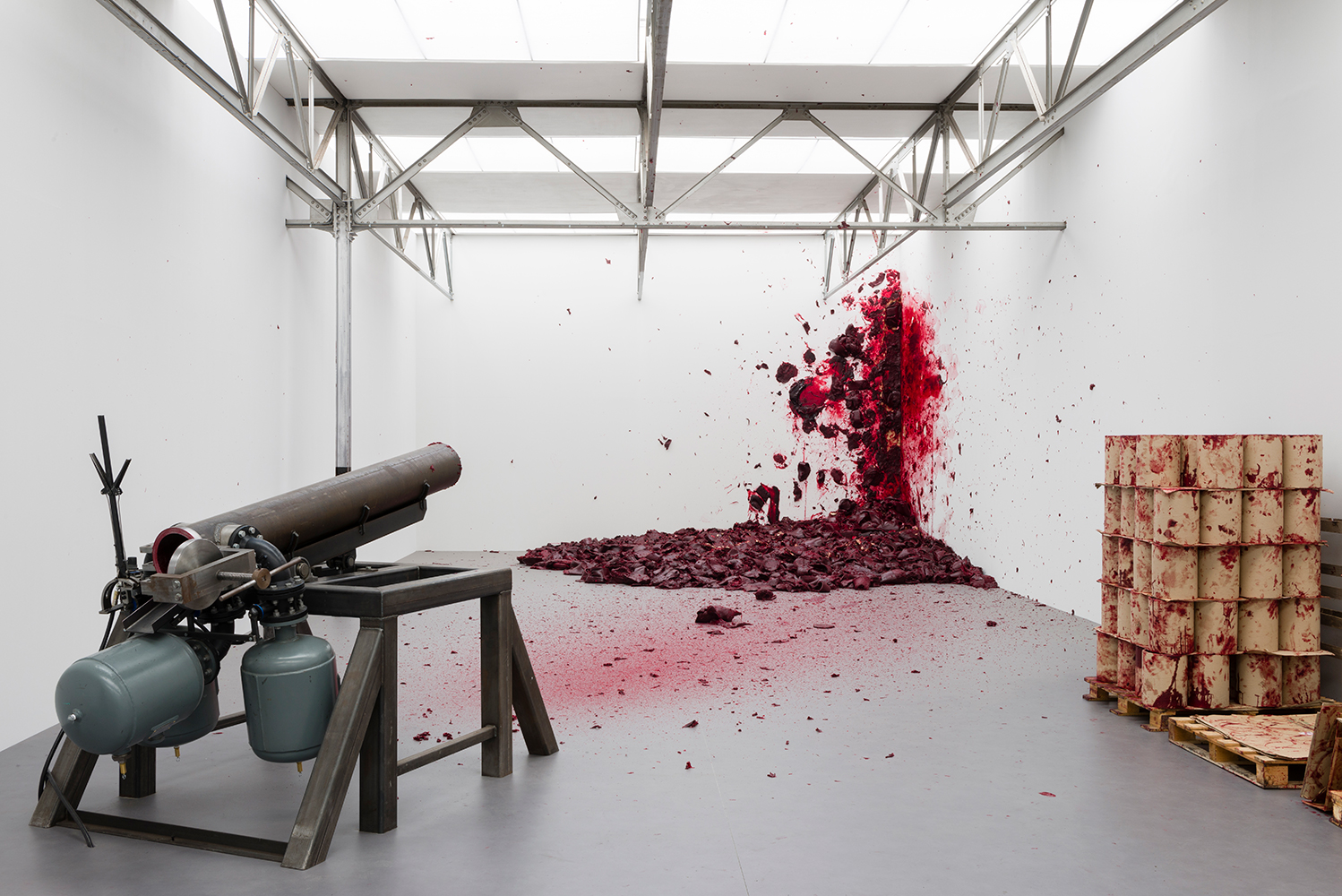
Descension (2014)
A whirlpool of black water, Descension spirals endlessly into itself. Where Butchered spills outward in red, this work draws us inward into darkness. One is loud, the other quiet, but both leave us uneasy, reminders of forces bigger than us.
Art isn’t always meant to comfort. Sometimes it unsettles — splashing walls, swallowing light, or turning the sea into a stage. Anish shows us that beauty can disturb, that colour can feel like a wound, that silence can carry its own roar. Butchered isn’t art for a wall; it’s art that lingers, demanding another look.
In its red spill, we are forced to confront what we would rather ignore, the violence of industry, the fragility of the planet, the weight of our complicity. And perhaps this is where art is most powerful: not in comfort, but in confrontation.
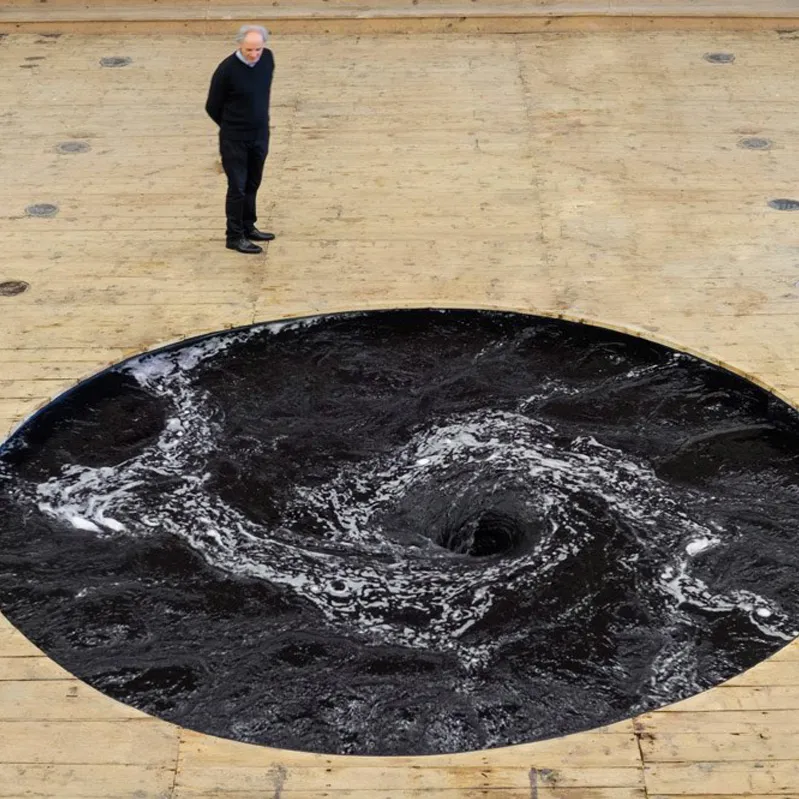
Because when art unsettles us, it does something far more important than please us – it forces us to think, to feel, to change.















